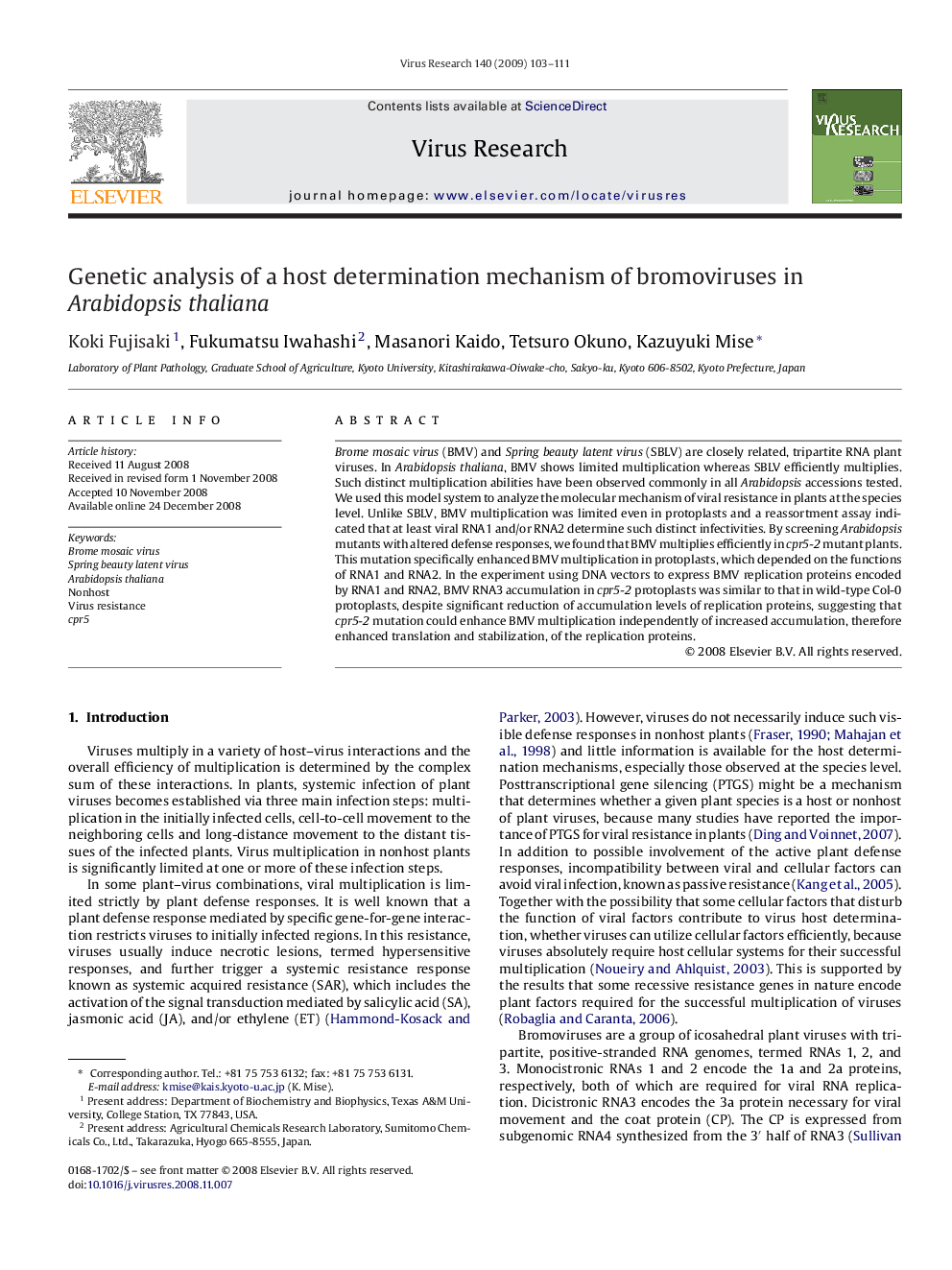| Article ID | Journal | Published Year | Pages | File Type |
|---|---|---|---|---|
| 3429932 | Virus Research | 2009 | 9 Pages |
Brome mosaic virus (BMV) and Spring beauty latent virus (SBLV) are closely related, tripartite RNA plant viruses. In Arabidopsis thaliana, BMV shows limited multiplication whereas SBLV efficiently multiplies. Such distinct multiplication abilities have been observed commonly in all Arabidopsis accessions tested. We used this model system to analyze the molecular mechanism of viral resistance in plants at the species level. Unlike SBLV, BMV multiplication was limited even in protoplasts and a reassortment assay indicated that at least viral RNA1 and/or RNA2 determine such distinct infectivities. By screening Arabidopsis mutants with altered defense responses, we found that BMV multiplies efficiently in cpr5-2 mutant plants. This mutation specifically enhanced BMV multiplication in protoplasts, which depended on the functions of RNA1 and RNA2. In the experiment using DNA vectors to express BMV replication proteins encoded by RNA1 and RNA2, BMV RNA3 accumulation in cpr5-2 protoplasts was similar to that in wild-type Col-0 protoplasts, despite significant reduction of accumulation levels of replication proteins, suggesting that cpr5-2 mutation could enhance BMV multiplication independently of increased accumulation, therefore enhanced translation and stabilization, of the replication proteins.
